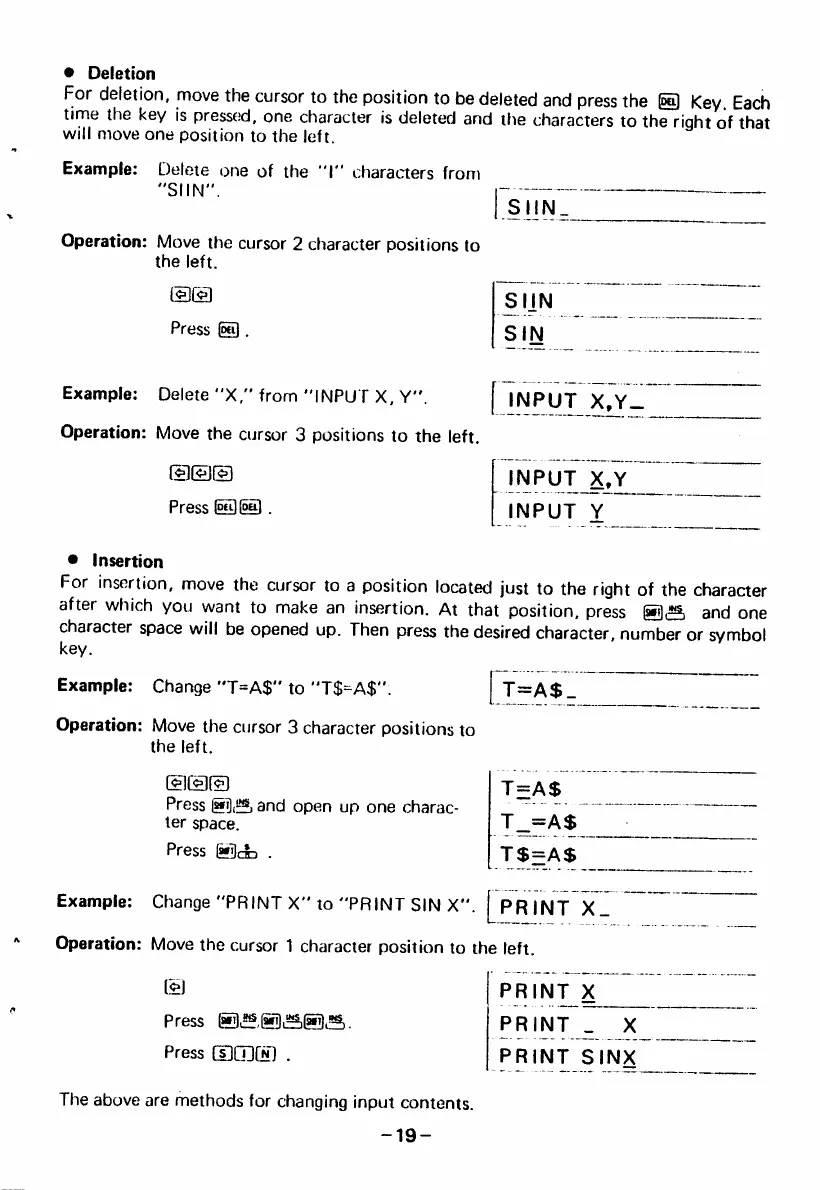• D e l e t i o n
For deletion, move the cursor to the position to be deleted and press the ® Key. Each
time the key is pressed, one character is deleted and the characters to the right of that
will move one position to the left.
Example; Delete one of the "1" characters from
"SUN".
SIIN_
Operation: Move the cursor 2 character positions to
the left.
©g)
SUN
Press @ .
SIN
Example: Delete "X," from "INPUT X, Y".
INPUT x.y_
Operation: Move the cursor 3 positions to the left.
©©©
INPUT X.Y
P r e s s .
INPUT Y
• I n s e r t i o n
For insertion, move the cursor to a position located just to the right of the character
after which you want to make an insertion. At that position, press and one
character space will be opened up. Then press the desired character, number or symbol
key.
Example: Change "T=A$" to "T$-A$".
T=A$_
Operation: Move the cursor 3 character positions to
the left.
©©©
Press and open up one charac
ter space.
T=A$
T_=A$
Press &3CL .
T$=A$
Example: Change "PRINT X" to "PRINT SIN X".
PRINT X_
Operation: Move the cursor 1 character position to the left.
©
PRINT X
Press
PRINT _ X
Press Cs]©[rD .
PRINT SINX
The above are methods for changing input contents.
-19-

